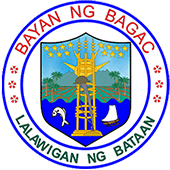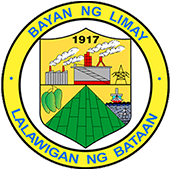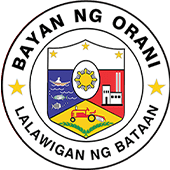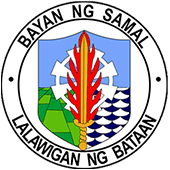Pilar
- Home
- Pilar
A Brief History of Pilar
Legend
Long ago this jurisdiction of the town of Balanga. There were very few inhabitants. One day a Spanish galleon was tossed to its shores by a violent storm. The galleon’s destination was some town where it was to convey the image of a virgin. The Spaniards were greeted by the inhabitants were they landed. The visitors asked for the name of the place and they replied that it has no name. The Spaniards suggested that the place be named in honor of the image they had with them which was that of the “Lady of the Pillar”. The people consented and since that time, the town had been called “Pilar”.
Background
Pilar has a history all of its own tainted with legends, traditions, glory and death. On March 10, 1801, it was separated from Balanga by the Dominican priests under the spiritual ministration of Virgen Nuestra Senora Del Pilar. Since then, Pilar has produced great men. Foremost among them was Don Pablo Roman considered as the father of Bataan.
Elected Officials
Mayor: Carlos F. Pizarro Jr.
Vice-Mayor: Cecilia R. Garcia
Sangguniang Bayan Members:


Contact Us
PRESENT
With the march of time, the once unknown town has risen to unparalleled popularity here and abroad. This town is noted for the historical landmarks like the Flaming Sword and the Shrine of Valor (Dambana ng Kagitingan). It is visited annually by war veterans from different places on Bataan Day (April 9) to reminisce and honor the past.
The industrial activities in the municipality of Pilar is characterized by small scale industries built around the urban core and its vicinity.
FAST FACTS
Pilar is found in the southeast portion of the province of Bataan. It is bounded by Orion in the South, Balanga in the North, Bagac in the west and Manila Bay in the East.
It has a total land area of 3,760.00 hectares. Its terrain is gently sloping to undulating, reaching a hilly peak. The highest elevation is 553 meters at Mt. Samat in Barangay Diwa.
As of May, 2020 (2021 SOCIO-ECONOMIC PROFILE 2023), the town has a population of 46,239 residing in nineteen (19) barangays.
Pilar produces an ample supply of rice, corn, vegetables, root crops and legumes. Chicken, hogs and ducks as well as freshwater fishers are abundant in the area. Bamboo, cogon and different vines can be sourced from hilly portions of Pilar while gravel and sand is abundant in Barangay Nagwaling, Alauli, Pantingan, Diwa and Liyang.
UTILITIES AND AMENITIES
Telecommunication facilities are made available by the local exchange of the Philippine Long Distance Telephone Company (PLDT) while telegraph facilities are mostly located in Balanga, an adjacent municipality.
The Peninsula Electric Cooperative (PENELCO) provides electricity to 100% of the households in Pilar. Fortunately, Bataan has huge natural watersheds that facilitate the sufficient supply of power in the whole province.
Residents in the town proper and nearby barangays conveniently get sufficient water from the Pilar Homeowner Assn. Water District. Other barangays get their water from deep wells, shallow wells, private pumps and artesian wells.
The municipality of Pilar (2021 SOCIO-ECONOMIC PROFILE 2023), features a well-developed infrastructure, including 18 educational institutions (14 of which are public and 4 of which are private schools), two banking entities (Rural Bank of Pilar, Inc. and Card SME Bank, Inc.), 1 Rural Health Unit, 5 Medical & Laboratory Clinics, and 1 Dental Clinic. Additionally, the Poblacion area of the municipality is home to a hotel, while the Barangay Panilao boasts a shopping arcade. Pilar also offers a variety of leisure and recreation options, including 7 inland resorts and 13 popular tourist destinations.
The Dambana ng Kagitingan (Shrine of Valor), a natural shrine atop Mt. Samat, is a regularly visited historical/tourist spot in Pilar. The Dunsulan Falls, which is located at the foot of Mt. Samat, is being developed into a high land resort and once completed, is expected to draw in more visitors and tourists into the area.
MAJOR INDUSTRIES
Trading and agri-related enterprises such as poultry and fishpond operation are the dominant business activities in Pilar.
PALAY PRODUCTION
As of 2021 (2021 SOCIO-ECONOMIC PROFILE 2023), the municipality of Pilar in the Philippines boasts an effective area of palay production, covering 2,367.50 hectares. This land area is estimated to yield a total of 13,323.10 metric tons or 289,633 cavans of rice, with an average production of 5.63 metric tons per hectare of rice-land, or 122 cavans.
Notably, Pilar is highly self-sufficient in its rice supply, with a sufficiency level of 227.16%. This indicates that the production of rice, taking into account factors such as post-harvest losses and actual consumption, yields a surplus of 122.16% of the net yield for the municipality, demonstrating its robust agricultural sector.
AQUACULTURE
The municipality has allocated a total of 99.64 hectares for the development of its aquaculture sector (2021 SOCIO-ECONOMIC PROFILE 2023). This land area is further divided into 2.64 hectares dedicated to freshwater fishponds, 79.3 hectares for brackish water fishponds, 16.2 hectares for hatcheries, and 1.5 hectares for the cultivation of Kapis. This specialized allocation of land resources speaks to the municipality’s commitment to fostering its aquaculture industry.
FISHERIES
The fishing community, is composed of 280 individuals, 200 of whom are full-time fishermen and 80 of whom engage in fishing on a part-time basis. The fleet of vessels utilized by the fisherfolk includes 182 motorized boats and 6 non-motorized boats (2021 SOCIO-ECONOMIC PROFILE 2023). To support their efforts, the fisherfolk have access to a shared fish port, which caters to the post-harvest processing industry of smoking, drying, and salting fish. This robust fishing community and supporting infrastructure demonstrate the significance of the fishing sector within the municipality.
INVESTMENT OPPORTUNITIES
Port operations, logistics, tourism and leisure activities are high potential investment opportunities in the town of Pilar as it will be home to one of the most promising FAB Expansion Areas in Bataan billed as Newport City where restaurants, hotels, leisure and tourist attractions are expected to rise as well.
Known for the Mt. Samat Shrine of Valor, these developments are expected to bring in more economic activities, agri-tourism endeavors, and infrastructure for MICE (Meetings, Incentives, Conferences and Exhibitions) tourism.
In Pilar, inventors can aim for a balance of work and leisure, as the municipality is also known for its peaceful and crime-free situation.
The Bunker
@ The Capitol Compound
Tenejero, Balanga City, Bataan 2100
Mon – Fri: 8:00 am – 5:00 pm


















